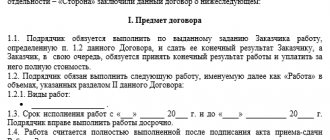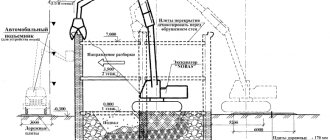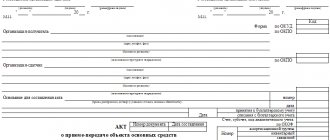Form KS-11 is a unified form of act, which indicates that any construction project is completely completed and ready for operation. It is filled out only after the construction customer has carried out the appropriate check and documented the results of all inspections, tests and measurements performed. It is this information that forms the basis of the act in form KS-11.
- Form and sample
- Free download
- Online viewing
- Expert tested
FILES
Why is the KS-11 act needed?
The completed form of the KS-11 act indicates that the property (residential/non-residential building/structure) has been built or the work on its technical re-equipment (reconstruction) has been completed.
IMPORTANT! Before presenting a document for payment, you should check whether the KS-11 form contains signatures not only of the contractor’s representative, but also of the customer or other competent persons (for example, an investor).
Form KS-11 is issued after the customer has checked and documented all measurement results (inspections, tests). This information should form the basis of the completed building acceptance certificate. Documentation is attached to the act, which the customer subsequently transfers to the owner of the object upon acceptance.
Read about another document drawn up after a comprehensive examination of the constructed facility in the material “Unified Form No. KS-14 - Form and Sample.”
Find out how to properly keep records of completed construction in ConsultantPlus. Study the material by getting trial access to the K+ system for free.
Points 9 to 11
This part conventionally includes points 9-11.
Clause 9. Here you need to refer to the application (i.e. indicate its number), which contains information about acts of acceptance of equipment installed at the site;
Clause 10. There should be a link to the application, which indicates acceptance certificates, certificates, etc. documents on communications included in the construction project.
Clause 11. This small table contains information about all other work carried out on landscaping, improvement of roads, sidewalks, construction of sports, play, and utility buildings related to the main object of the completed construction (with a clear indication of the units of measurement, volume and deadline for the work).
What is accompanied by the act
As for the list of attached documents, the information regarding it is contradictory. The album of unified forms (approved by Decree of the State Statistics Committee of November 11, 1999 No. 100), which contains both the KS-11 form itself and instructions for its use, refers to the list of documentation contained in the Temporary Regulations on the Acceptance of Completed Construction Facilities. However, in accordance with the letter of Rosgosstroy dated October 31, 2001 No. SK-5969/9, the previous letter of the department, which recommended this Temporary Regulation for use, was canceled. In this regard, the list of necessary documents must be agreed upon by the parties when concluding the contract.
Based on the act, the contractor submits to the statistical office information that the construction of the facility has been completed and all contractual obligations have been fulfilled. In these reports, the asset put into operation is shown in the period when such a fact was recorded (meaning the fact of commissioning).
After this, the above fact is brought to the attention of municipal executive authorities. Moreover, this is already done by the real estate user or the construction customer.
Page 2
The eighth paragraph of the acceptance certificate can be highlighted as a separate section. It includes two tables. The first of them contains six columns and concerns any construction projects, with the exception of residential buildings.
Column 1. Here you need to enter the name of the main indicator of the construction project: power, productivity, capacity, production area, volume, throughput, number of jobs, length, etc.
Column 2. Here you need to indicate the unit of measurement of the previous indicator (square meters, cubic meters, etc.)
Columns 3-6. These columns contain information about how many total units of measurement for each previously specified indicator the given object includes according to the project and actually.
The second table is filled in only if the construction project was a residential building. It has four columns, which also contain specific indicators and units of measurement with the values that were prescribed in the development project and those that actually turned out.
Form KS-11 - download or compose yourself
Form KS-11, which is included in the album of unified forms (Resolution No. 100), is approved by another regulatory document - Resolution of the State Statistics Committee of October 30, 1997 No. 71a. However, it is the same form.
You can download KS-11 (form) on our website.
Due to the fact that since 2013, unified forms are not mandatory for use, any company can use its own developed form. But the difference between unified forms is the optimal number of indicators they contain necessary to document the results of an object inspection. The KS-11 sample we offer below for downloading refers to just such convenient and relevant forms.
On unilateral acceptance of work
As stated above, paragraph 4 of Article 753 of the Civil Code of the Russian Federation provides for the possibility of issuing a unilateral act of acceptance of work in the event of the other party’s refusal to sign it.
In paragraph 8 of the Review dated January 24, 2000, also cited above, the Supreme Arbitration Court of the Russian Federation noted that the said norm protects the interests of the contractor if the customer unreasonably refused to properly prepare documents certifying acceptance. Accordingly, the contractor does not have the right to refer to a unilateral act in the absence of acceptance as such, i.e. in the absence of notification of the customer by the contractor about the readiness of the work result for acceptance.
According to paragraph 2 of Article 753 of the Civil Code of the Russian Federation, a unilateral act of delivery or acceptance of the result of work can be declared invalid by the court only if the reasons for refusing to sign the act are recognized by it as justified.
Commenting on this norm, the Supreme Arbitration Court of the Russian Federation in paragraph 14 of the Review dated January 24, 2000 indicated that the act drawn up in this manner is evidence of the contractor’s fulfillment of the obligation under the contract and if the customer refuses to pay, the court is obliged to consider the customer’s arguments justifying his refusal to sign act of acceptance of the work result.
At the same time, if there is evidence of the completion of the work and the actual acceptance of the result by the customer, failure to sign the work acceptance certificate in itself is not grounds for exempting the customer from paying the cost of the work performed (decision of the Supreme Court of the Russian Federation dated January 26, 2021 No. 70-KG15- 14).
Results
Form KS-11 - acceptance certificate for a completed construction project - is issued upon completion of construction work. The unified form contains all the details required for the primary document. But the contractor has the right to develop the form independently.
Sources:
- Resolution of the State Statistics Committee of November 11, 1999 No. 100
- Resolution of the State Statistics Committee of October 30, 1997 No. 71a
You can find more complete information on the topic in ConsultantPlus. Free trial access to the system for 2 days.
About the general conditions and procedure for accepting work
Acceptance of work under a construction contract must be carried out in accordance with the provisions of the Civil Code of the Russian Federation (Civil Code of the Russian Federation), namely, Articles 720 and 753. In accordance with Article 720 of the Civil Code of the Russian Federation, the customer is obliged, within the time frame and in the manner prescribed by the contract, with the participation of the contractor, inspect and accept the work performed (its result), and if deviations from the contract are discovered that worsen the result of the work, or other shortcomings in the work, immediately report this to the contractor.
According to paragraphs 1 and 2 of Article 753 of the Civil Code of the Russian Federation, the customer, having received the contractor’s message about the readiness to deliver the results of the construction work performed under the construction contract, is obliged to immediately begin accepting it. The customer organizes and carries out acceptance of work at his own expense, unless otherwise provided by the contract.
Clause 4 of Article 753 of the Civil Code of the Russian Federation provides for the registration of delivery and acceptance of work performed under a construction contract, signed by both parties. If one of the parties refuses to sign the act, then a mark to this effect is put in it, and the act is signed by the other party.
What are the stages of acceptance of work under a construction contract?
- notification of the customer by the contractor about the readiness of the work result for acceptance;
- direct acceptance of work, i.e. inspection of their results by representatives of the parties;
- execution of an acceptance document (signing by the parties of a work acceptance certificate or execution of a unilateral act in the event of an unreasonable refusal by the customer to sign it).
It follows from the provisions of Article 711 of the Civil Code of the Russian Federation that the acceptance certificate is the basis for their payment.
The practice of applying Article 753 of the Civil Code of the Russian Federation by the courts is based on the fact that the contractor, when filing a claim to recover the price of work performed, must prove the fact that it was completed and delivered to the customer. In particular, paragraph 8 of the Information Letter of the Presidium of the Supreme Arbitration Court of the Russian Federation dated January 24, 2000 No. 51 (hereinafter referred to as the Review dated January 24, 2000) states that the basis for the obligation to pay for work performed is the delivery of the result of the work to the customer. In this case, the contractor does not have the right to refer to a unilateral work acceptance certificate if it is established that he did not notify the customer about the completion of the work under the contract and did not call him to participate in the acceptance of the work result.
A similar conclusion is contained in the Ruling of the Supreme Court of the Russian Federation dated August 24, 2015 No. 302-ES15-8288, according to which the contractor, in confirmation of the fact of completion and delivery of the work, must provide the court with evidence of the plaintiff’s notification of readiness to hand over the result of the work, as well as the acceptance certificate.
At the same time, the courts, based on the circumstances of the case, may accept other documents as adequate evidence of the completion of work. In particular, in Determination No. 305-ES15-3990 dated July 30, 2015, the Supreme Court of the Russian Federation indicated that certificates of completion of work are not the only means of proving relevant circumstances, and accepted as evidence of the completion of work an acceptance certificate signed by the customer and the general contractor, which reflected the work performed by the plaintiff.
Sample and example of filling out an act of completed construction of an object
The main provisions of the acceptance certificate are:
- name and address of the construction site constructed at the initiative of the customer;
- name of company:
- Issued permission for the construction of the specified property.
- Developed and approved design documentation for construction.
- Conducted research or survey activities before issuing a building permit.
- Subcontractor involved in construction activities.
Construction participants
The main actors are organizations that perform various functions and, depending on this, are called:
- investor,
- developer,
- customer,
- designer,
- contractor.
Investor
An investor is a participant in construction financing; this category is usually represented by enterprises or organizations that allocate funds for the construction of buildings and structures from borrowed or own funds. An investor or a group of investors is given the right to manage the results of investments in the following areas of activity:
- determining the direction of capital investment,
- development of contractual terms for the construction of the facility,
- choice of organizational form for the construction of the facility,
- study and selection of designers, suppliers, contractors through bidding or proposals on the private market,
- financial lending to participants in the construction process.
An investor can be a lender, a customer, act as a developer and a buyer of final products.
Developer
This link can be represented by an individual or legal entity who has full rights to the land plot for development and is the owner of the land.
Customer
He is an individual or a legally registered company that takes over the management and organization of the construction of the facility. The scope of his authority extends to activities from the initial development of a feasibility study (technical economic justification) to the commissioning of a building or the expansion of the construction process to full design capacity. The customer does not own the land, but only uses it to construct the facility.
General Contractor and Contractor
Typically, this role is played by a construction organization that erects a building under the terms of a concluded agreement or contract. Within the framework of the project, construction requirements and standards provide for the responsibility of the general contractor to the customer in terms of compliance with the developed conditions and the agreed cost.
The general contractor may, after agreement with the customer, involve other installation companies or specialized firms in performing certain works or entire stages of construction. The general contractor is responsible to the customer for the timing and quality of work.
Designer
The role of this link is played by a design and survey, design or research organization that carries out activities to develop the project in accordance with contractual obligations. The general designer rightfully uses specialized workers, but is responsible for the implementation of the project, its quality, economic and technical indicators, and the correctness of construction within the framework of design decisions. To ensure control over the correct execution of work on the project, the general designer appoints specialists for architectural supervision.
Legal requirements
The law prohibits the contractor from transferring the building to the customer if this act is not drawn up. After all, its design is the final stage of preparing the object for delivery. The document is filled out on a unified form, which consists of several pages. All data associated with the object is entered here. Based on a correctly drawn up and signed act, the customer makes the final payment. At the same time, it allows you to draw up all the necessary documentation related to construction projects.
The act must have as many copies as needed. Usually the document is concluded between two parties. Accordingly, the act is drawn up in two copies. However, there are situations when third parties take part in the transaction. Copies of the act are also prepared for them.
The document will be considered valid only if it is signed by all responsible persons. For example, this is the main contractor, the customer, third parties. But the customer will sign his autograph on the document only after a thorough check of the object. This may be a visual inspection, various tests and samples.
Various documents relating to this design are attached as additions to the act. In the future they are transferred to the customer or the new owner. For example, these could be acts of intermediate inspection or inspection of hidden work. Statistical reporting documentation is also attached.
When and by whom is it filled out?
The responsibility of the contractor is not only the timely delivery of a construction project of adequate quality. It must provide conditions under which the customer can carry out a thorough check.
There is no fundamental difference in who exactly will enter all the necessary information into the act. However, this is usually done by the contractor, because it is he who is responsible for the construction and, accordingly, knows all the nuances of the structure. Also, it is this party that is interested in the correct execution of the document, because after this the customer makes the payment. Although recently it is the customers who are involved in drawing up such documents. But it’s worth repeating, it makes no difference whose hand will enter the information. After all, they will still be rechecked by representatives of both sides.
All information is entered on the day of inspection of the object by the customer. After the inspection, if there are no complaints, the customer reports his readiness to sign the act. Thus, he confirms that the work has been completed in accordance with all requirements. The document contains information about exactly how the inspection was carried out, how measurements, inspections and tests were carried out.
If any shortcomings are found, the customer may refuse to sign the document until the contractor corrects the situation. It is possible that conflicts will arise between the parties. Often the customer believes that the design has serious flaws. But the performer, having a different point of view, proves that he is right. Accordingly, in this case he refuses to complete or redo the work. As you might guess, in situations where it is not possible to resolve the problem peacefully, the case is heard in court.
Instructions for filling out the form
During the construction process, buildings are subject to numerous intermediate inspections. But the main one is the check performed after the construction project is completely completed. It is in this situation that the long-awaited document is drawn up - the act of acceptance of the completed object.
Filling out the KS-11 header
This part is intended to enter detailed information about the artist. There must be a “header” here, which indicates the document number, its name and the date of preparation. Below is the name of the contractor company, OKPO code. Then information about the responsible persons on both sides is entered. The following information is entered point by point:
- Information about the construction site, namely its exact address and characteristics.
- The government organization that has given written permission to carry out this construction work.
- If subcontractors were involved in the construction of the structure, all of them are indicated in this paragraph.
- Some organization was involved in the design. Its name is indicated here. Additional companies that were involved in preparing the estimate and project are also registered.
- It is noted on the basis of which document the design work for this facility began.
- Information about the authorities that approved the estimate and project.
- The period during which construction work was carried out.
We fill out the conditions for signing the KS-11 act
- This item completely occupies the second sheet. Here you can see two tables. Their columns contain hints on how to fill them out. As a rule, there are no difficulties with this. You just need to remember that only one table needs to be filled out. So, if the object is a production, industrial or other similar building, then you need to fill out the first table. The second is intended for situations where the building is a residential building.
- If any equipment was installed inside the building, the responsible persons had to accept it and allow it to be put into operation. This paragraph indicates the numbers of these acts.
- Certificates and certificates confirming the fact that the communications available in the building have been accepted for operation.
- This paragraph contains a table designed to display all the actions taken to improve the surrounding area. For example, this could be laying asphalt, planting plants, arranging children's and sports grounds, etc.
Final part
- The final cost of the object is indicated here. In fact, this should be the figure that is written in the estimate.
- The amount of fixed assets accepted.
- A link to the application containing all additional documentation that must be attached to the act.
- If any additional conditions have been determined without which the object cannot be delivered, they are indicated here. For example, turnkey delivery of a building.










